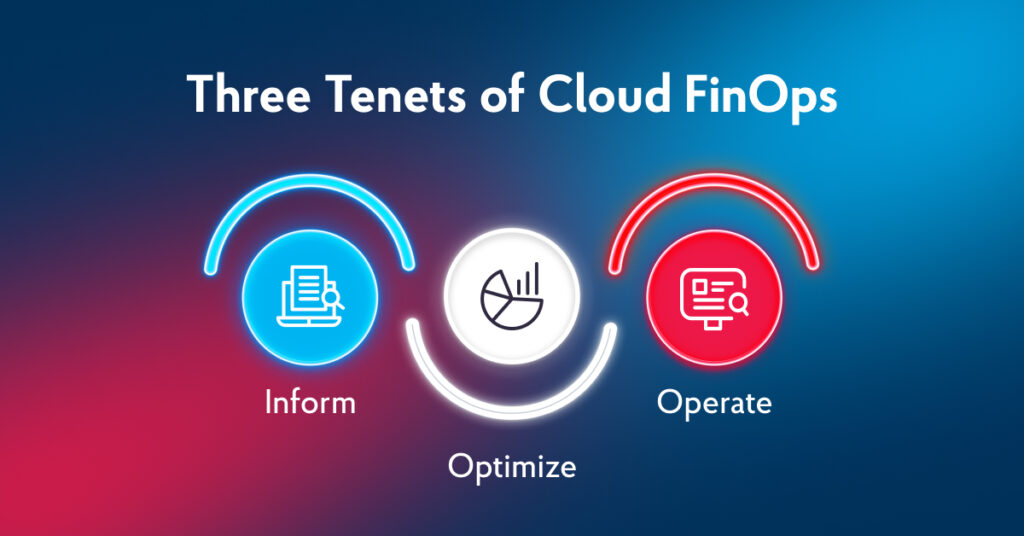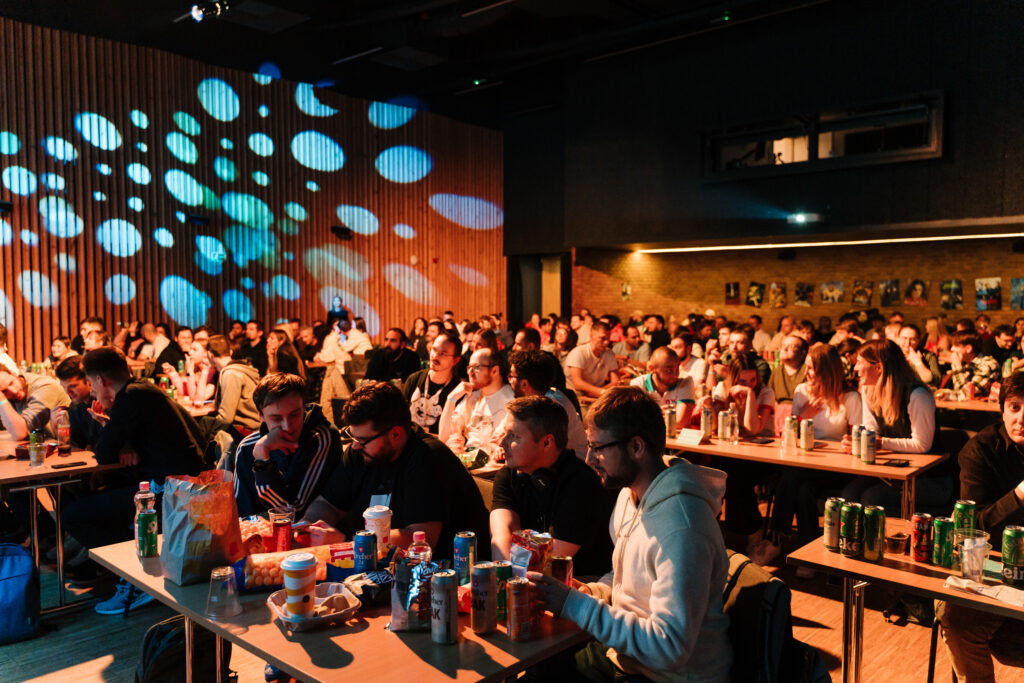Today, it’s challenging to imagine an IT project not utilizing cloud services, which naturally comes with associated costs. And where there’s money, there must be control. That’s why introducing a FinOps culture into projects is increasingly important. In this article, NIX’s DevOps experts explain how this approach helps track the budget and make cost-effective decisions.
What Is FinOps In The Cloud?

FinOps (Financial Operations) is a comprehensive methodology for managing and optimizing cloud computing costs and resources. Far more than simple budget tracking, FinOps represents a cultural shift that harmoniously balances service quality, cost efficiency, and process performance.
Unlike traditional cost-cutting measures, FinOps focuses on optimizing resource allocation to maximize business value. This approach may occasionally lead to increased cloud expenditures when justified by improved efficiency and enhanced product value.
Someone might ask: why complicate things? Just create a Google spreadsheet with basic and additional costs, and you’re good to go. However, in reality, it’s not that straightforward. Сloud services across cloud infrastructure like AWS, Azure, and Google Cloud feature complex pricing models based on resource volume, usage duration, and various other factors. This complexity makes manual tracking through spreadsheets impractical, especially when utilizing multiple providers simultaneously. Effective cloud financial operations require specialized skills in data processing, analysis, and visualization to consolidate information into actionable insights.
The Three Tenets Of Cloud FinOps Explained

FinOps operates on three fundamental tenets that form a continuous cycle of improvement:
1. Inform
Teams must understand cloud costs and develop complete visibility into their organization’s cloud spending. This includes establishing reporting mechanisms, implementing tagging strategies, and creating dashboards that provide real-time insights into usage patterns and expenditures with accurate data.
2. Optimize Cloud Costs
With cost visibility established, teams can identify opportunities to control cloud spending. This involves analyzing usage patterns, eliminating waste, rightsizing resources, leveraging discounted purchasing options, and implementing automated scaling solutions to match resources with actual demand.
3. Operate
Implementation is where optimization strategies translate into action. This involves establishing governance policies, automating cost controls, setting budget alerts, and continuously monitoring resource usage. The operating phase ensures optimization efforts deliver measurable results.
These tenets form a cyclical process that continuously evolves as cloud usage patterns change and new cloud optimization opportunities emerge.
What Are The Six Principles Of FinOps?
The FinOps Foundation has established six core principles that guide effective cloud financial management:
1. Teams Need to Collaborate
Cross-functional collaboration between finance, technology, and business teams ensures all stakeholders understand cloud costs and work together to optimize spending.
2. Everyone Takes Ownership for Their Cloud Usage
Individual accountability ensures team members recognize how their decisions impact costs and take responsibility for optimizing their resource usage.
3. A Centralized Team Drives FinOps
While everyone participates, a dedicated FinOps team establishes best practices, provides guidance, and coordinates optimization efforts across the organization.
4. FinOps Reports Should Be Accessible and Timely
Real-time, accessible reporting enables informed decision-making and rapid response to cost anomalies.
5. Decisions Are Driven by Business Value of Cloud
Cost optimization decisions prioritize business outcomes rather than simply reducing expenses. Sometimes spending more delivers greater overall value.
6. Take Advantage of the Variable Cost Model of the Cloud
Cloud’s elasticity allows resources to scale with demand, providing opportunities to optimize costs by aligning resource provisioning with actual needs.
FinOps Benefits: Does FinOps Really Matter?
Implementing FinOps delivers four core benefits that directly impact business success:
- Budget optimization. By eliminating unnecessary expenses and optimizing resource allocation, FinOps reduces cloud costs while maintaining or improving service quality. This creates financial flexibility to invest in other business priorities.
- Productivity. FinOps specialists identify optimal solutions for cloud resource utilization, analyzing performance requirements and available service offerings. This enables teams to access greater computing power within budget constraints, accelerating development and improving end-user experiences.
- Predictability. Cloud resource usage fluctuates throughout product development cycles, affecting associated costs. FinOps practices enable precise resource planning and forecasting, helping businesses anticipate spending patterns and avoid budget surprises.
- Transparency. Many teams pay for cloud services without fully understanding cost components. FinOps breaks down billing structures and engages team members in understanding expenses. This transparency fosters ownership and responsibility as team members gain visibility into how their decisions impact costs.
FinOps Team And Stakeholders: Who Is Involved In FinOps?

Effective FinOps implementation requires participation from various stakeholders and collaboration across cross-functional teams:
FinOps Practitioners. These specialists — often with backgrounds in DevOps, cloud architecture, or IT finance — lead implementation efforts. The FinOps team analyzes usage patterns, identifies optimization opportunities, and develops governance policies. In smaller organizations, DevOps engineers typically assume this responsibility alongside their existing duties.
Engineering Teams. Developers and engineers implement applications that run on cloud technology, making architectural decisions that affect resource consumption. Their buy-in is essential, as they must understand how their technical choices impact costs. Collaboration across cross-functional teams is vital to align engineering decisions with financial goals and optimize cloud usage.
Finance Teams. Finance professionals provide budgetary guidance, assist with forecasting, and help translate technical metrics into financial impact. Their involvement ensures alignment between cloud spending and broader financial objectives.
Business Stakeholders. Product owners and business leaders define the value metrics against which cloud investments are measured. Their input helps balance cost considerations against business outcomes.
Executive Sponsors. Senior leadership support legitimizes FinOps initiatives and helps overcome organizational resistance. Their advocacy ensures FinOps principles become a cultural practice embedded in company culture.
How To Implement A FinOps Program: A Complete Implementation Guide
Successful FinOps implementation requires both a structured approach and an understanding of organizational maturity. This guide integrates the FinOps lifecycle with the industry-standard maturity model to provide a roadmap for your cloud financial management journey.
The FinOps Maturity Model: From Crawl to Run
Crawl: Foundation Building (Months 1-3)
During this initial phase, teams develop fundamental skills to analyze cloud budgets while establishing baseline cost visibility.
Key characteristics:
- Initial cost visibility with basic reporting
- Manual optimization processes
- Reactive approach to cost management
Essential activities:
- Implementing resource tagging strategies
- Establishing baseline reporting mechanisms
- Building awareness of cloud costs across technical teams
- Identifying obvious waste
Walk: Process Refinement (Months 4-9)
Teams begin automating cost monitoring and implementing more sophisticated optimization strategies while strengthening cross-functional collaboration.
Key characteristics:
- Automated monitoring and reporting
- Proactive cost optimization
- Regular cross-team collaboration
Essential activities:
- Automating reporting and anomaly detection
- Implementing rightsizing recommendations
- Leveraging reserved instances and savings plans
- Establishing chargeback mechanisms
- Creating formalized governance policies
Run: Cultural Integration (Months 10+)
At this advanced stage, FinOps principles become fully integrated into organizational culture with optimization focused on unit economics.
Key characteristics:
- Continuous optimization through automation
- Decision-making driven by unit economics
- Financial efficiency as cultural value
Essential activities:
- Deploying real-time decision support systems
- Implementing predictive analytics
- Conducting unit economics analysis
- Creating innovation incentives aligned with financial efficiency
Implementing the FinOps Lifecycle for Cost Efficiency
The FinOps lifecycle provides a framework that experienced FinOps practitioners apply at each maturity stage:
1. Build Awareness and Visibility
Foster comprehensive understanding of organization’s cloud spending patterns across all stakeholders.
Implementation strategies:
- Create cloud cost education programs
- Implement comprehensive tagging policies
- Deploy centralized monitoring dashboards
- Conduct regular cost review meetings
2. Drive Strategic Optimization
Focus on identifying inefficiencies in cloud resource allocation and utilization.
Implementation strategies:
- Analyze usage patterns for rightsizing opportunities
- Implement auto-scaling configurations
- Leverage commitment-based discounts
- Optimize storage costs with tiered strategies
3. Establish Continuous Control Mechanisms
Transform optimization into sustainable practices through governance and accountability systems for financial control.
Implementation strategies:
- Deploy automated policy enforcement
- Implement budget alert systems
- Create approval workflows for high-cost resources
- Establish benchmarking practices
Practical Implementation Guidance
Starting at Crawl Stage:
- Assign initial FinOps responsibility to existing team members
- Implement basic resource tagging
- Enable native cloud provider cost tools
- Conduct waste cleanup initiatives
Advancing to Walk Stage:
- Establish a dedicated FinOps function
- Implement automated reporting with customized dashboards
- Develop team-specific optimization playbooks
- Create financial accountability models
Evolving to Run Stage:
- Develop sophisticated unit economics models
- Implement predictive analytics
- Automate optimization processes
- Establish cloud financial benchmarks
Remember that implementing FinOps represents a continuous improvement cycle. Different teams may progress through these maturity stages at different rates, but successful FinOps practitioners understand that the goal is transforming cost optimization from a periodic initiative into a fundamental aspect of organizational culture.
FinOps: Best Practices
The FinOps framework is still relatively young in the broader Western IT landscape. As a result, there aren’t numerous established FinOps practices to draw from. The best approach is to turn to the FinOps Framework. Developed by the FinOps Foundation community, this framework encompasses all aspects related to initiating and sustaining a FinOps culture within a project. It spans various facets, from functional domains, stakeholders, and tasks, to specific processes and milestones. This community was initially founded under the Linux Foundation’s umbrella in 2019, and it has grown significantly, now boasting over 10,000 experts and representing more than 3,500 companies.
It is worth mentioning that the FinOps framework is constantly evolving. Each community member is encouraged to contribute their ideas to enhance it as they see fit. Additionally, the FinOps Foundation itself promotes the adaptability of the proposed solutions to suit the unique requirements of individual projects. In contrast, Microsoft suggests placing greater emphasis on the maturity model rather than focusing exclusively on the framework. Azure developers recommend evaluating the team’s achievements in each specific area rather than fixating on particular maturity indicators.
From the known FinOps approaches, we’d like to highlight those we consider the most effective:
- Involve the entire team. FinOps culture requires participation from everyone who interacts with cloud resources. A single person responsible for tracking expenses is insufficient; all team members must understand and contribute to optimization efforts.
- Distribute responsibility. Assign ownership for specific cost categories to relevant team members. This approach ensures continuous awareness of optimization opportunities for each resource type.
- Visualize the data. Well-designed, intuitive cost dashboards enhance understanding of spending patterns and their business impact, making cost data accessible to technical and non-technical stakeholders alike.
- Establish cost controls. Even with team-wide commitment to FinOps, budget overruns can occur due to traffic spikes, code inefficiencies, or other factors. Implement notifications and automatic resource restrictions to prevent significant financial losses during critical situations.
- Don’t limit yourself to one platform. While many projects use services from a single provider for simplicity, distributing microservices across platforms can yield substantial cost savings and mitigate vendor-specific risks in certain scenarios.
- Integrate various tools. There are well-designed native applications tailored for FinOps, including AWS Cost Explorer, Azure Invoices, and Google Cloud Pricing Calculator. Additionally, third-party solutions like Apptio Cloudability and Spot by NetApp can prove to be valuable assets.
- Contact technical support. Even if it may seem counterintuitive to seek advice from your service provider on cost-saving measures. Support teams are generally well-equipped to help customers optimize their resources and budgets. Major cloud providers offer a range of cost-saving options, such as seasonal promotions, spot instances, and bulk pricing. Sometimes, these savings are specific to certain technologies. For instance, AWS offers up to a 72% discount on reserved instances compared to on-demand instances.
- Scrutinize not only large but also small expenses. It would be great to find a budget item that would immediately save 20% or more. In reality, this almost never happens. However, by getting rid of many small expenses, you also optimize a lot of resources.
- Disable or delete what you don’t need. A lot of money is spent on instances that are not used “here and now.” Set up automatic scaling systems to disable or remove what is not needed on the project at the moment. It is more expedient to enable or re-create them later.
- Forecast before implementing. Many tools allow you to calculate the costs of certain resources before they are connected. This offers developers immediate insights into the feasibility of a particular technical solution. This will help to avoid costly errors in the future.
What You Need to Know to Become a FinOps Engineer
Becoming a proficient FinOps engineer requires a diverse skill set that spans DevOps, Business Intelligence, Big Data, and a solid foundation in finance — particularly in forecasting and budgeting.
This career path is often pursued by DevOps specialists who have deep expertise in cloud solutions and the ability to integrate FinOps methodologies into CI/CD pipelines. In many instances, a FinOps engineer, who is a DevOps engineer, takes on the role of Product Owner for the infrastructure they manage. They possess a comprehensive understanding of the project’s technologies, service costs, and both business and client requirements, aligning these elements toward a common objective.
Consider a scenario where you need to analyze fluctuations in cloud service costs. This involves monitoring various metrics, such as CPU utilization, identifying anomalies, and pinpointing the microservice responsible for excessive resource consumption. At times, this may require a deep dive into REST requests. Once the issue is identified, the next step is assessing whether the increased resource usage aligns with business objectives — calculating potential productivity gains against higher costs.
However, the role extends beyond technical analysis. A FinOps engineer engages with multiple stakeholders, including developers, business analysts, clients, and internal teams, ensuring that cloud expenditures align with business priorities.
The responsibilities of a FinOps engineer vary across organizations and projects. In some cases, they focus on researching cloud service providers to optimize costs, while in others, they function as strategic advisors — guiding developers and enforcing FinOps best practices.
On many projects, a dedicated FinOps engineer may not be feasible. Instead, DevOps teams take the lead in fostering a FinOps culture, ensuring that cost-efficiency is embedded in the development process. However, professionals across different project stages can contribute by collaboratively defining the true cloud service needs for their respective areas. Ultimately, any IT professional, including those exploring DevOps vacancies, can develop FinOps expertise with the right motivation and knowledge.
FinOps Tools: Which FinOps Solutions Are Best for Getting Started?
A well-equipped FinOps toolset combines native cloud provider solutions with third-party platforms:
Native Cloud Provider Tools:
- AWS Cost Explorer and AWS Budgets: Visualization, analysis, and budget management for AWS resources
- Azure Cost Management and Billing: Comprehensive cost tracking and optimization for Azure environments
- Google Cloud Pricing Calculator and Cost Management: Usage forecasting and spend analysis for Google Cloud
Third-Party Solutions:
- Apptio Cloudability: Multi-cloud cost management with advanced reporting capabilities
- CloudHealth by VMware: Cloud financial management with optimization recommendations
- Spot by NetApp: Automated cost optimization focusing on compute resources
- Flexera One Cloud Cost Optimization: Enterprise-grade cloud cost management and governance
- CloudZero: Cost intelligence platform with unit economics analysis
Open Source Options:
- Infracost: Infrastructure cost estimates for Terraform
- OpenCost: Kubernetes cost monitoring
- KubeCost: Kubernetes-specific cost allocation and optimization
Start with your provider’s native cloud cost management tools, which offer significant functionality without additional investment. As your FinOps practice matures, evaluate specialized solutions based on your specific needs, such as multi-cloud management, container optimization, or integration with existing financial systems.
Integrating FinOps from the Start
Embedding FinOps principles from the earliest stages of development is critical to maximizing resource efficiency and cost-effectiveness. This proactive approach enables flexible cloud utilization, reducing unnecessary expenses at the architectural level and fostering long-term FinOps goals. This mindset enables organizations to optimize their cloud usage costs and drive sustained success.





